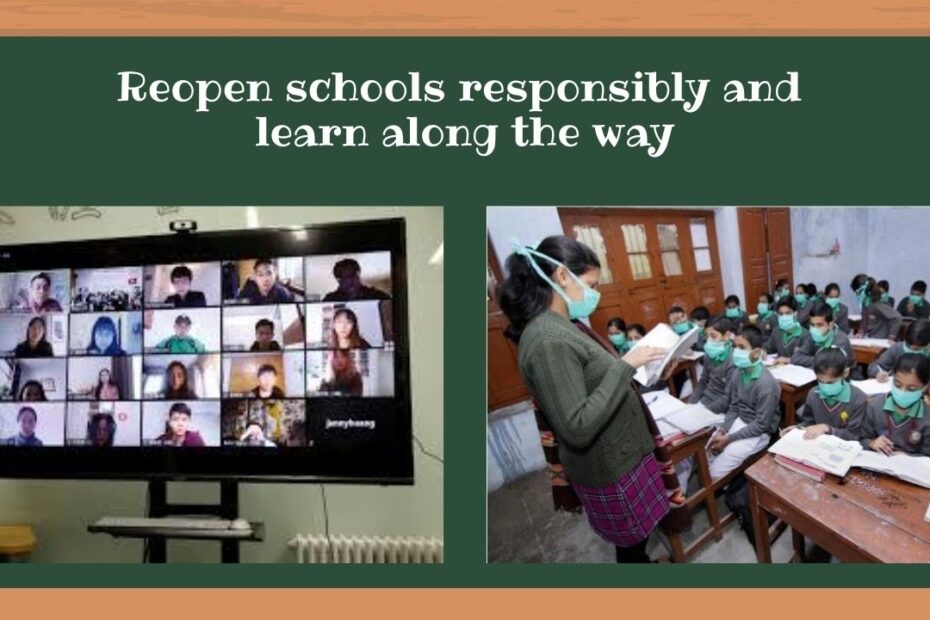- +91 9845115065 Email us

Reopen schools responsibly and learn along the way
What is at stake today is not only the education but also the health and well-being of our children. While the debate on reopening of schools and colleges is veering towards the risk of educational institutions to begin functioning in physical form, we cannot ignore children’s health needs and emotional recalibration.
Over 1.5 million schools have been closed in India with over 24 crore students. We cannot go back to packed classrooms anymore. Reopening demands complete relook at our education system. Our policy makers and highly educated professionals in the education sector had all of summer, almost 6 months, to work on the modalities of the future of education in COVID-19 era. But, they seem to have failed to come up with a decent model that can assure parents of a safe environment for learning. They had ample time to work on various options, and now what we see is ad hoc response.
UNICEF has a Framework for Reopening of Schools released in June 2020. It offers general guidelines divided into three phases: Prior to reopening, during reopening and after reopening. The first stage involves identifying schools for reopening based on local conditions of transmission. A phased reopening plan with schools opening for certain days of the week or for certain grades should be made. Simultaneously, guidelines around social distancing and hygiene practices should be formulated.
These are too general, and India needs a different set of regulations because of our state of education system. The key element in the UNICEF recommendation is ‘reopening based on local conditions of transmission’. For this to happen, we need data – honest data on the extent of spread of pandemic at each block level, availability of educators and facilities for children.
Online mode of education is a temporary response of educators. As such the National Statistics Office reported that in 2017-18, only 23.8% of households had access to the web and only 20% of those aged five and above were able to use a computer. A survey conducted by the NCERT among 18,188 students says that 27% of students do not have smartphones and laptops, and 30-50% of the students found online learning difficult or burdensome.
world, schools are being asked to: stagger start and finish times, without shortening the number of teaching hours each pupil receives, minimise the number of contacts each pupil has during the day, by putting classes or whole year groups into “protective bubbles” and avoid assemblies or collective gathering.
“Children should not become the losers of the pandemic,” German Chancellor Angela Merkel has said. The German Teachers’ Association has called for a differentiation between schooling for younger children up to the age of 10 who they say should be taught in larger groups than the older students.
South Korean study has found that children under 10 transmit the virus much less often than adults do, but that older children, aged 10 to 19, spread the virus at least as much as adults.
The new normal presents new challenges as students will not be returning to the traditional school settings. This can be an unsettling factor for young children. Educators have to carefully monitor disorienting and distressing conduct and offer support.
Explaining the need for the extreme measures to students could do damage to social and emotional outlook. How are we going to explain pandemic threats to children? Protocols necessary to protect against the spread of COVID-19 may affect younger children. The tragedy of current leadership that there is no consensus on correct and responsible behaviour for adults themselves. Each leader is peddling their own version of protect and cure.
Schools have to function in physical form with blended education of online and offline as future project. Till then, a radically new process of imparting education is a necessity. Reopen schools after taking a pledge to safeguard our future generation both emotionally as well as physically, and along the way be ready to learn the next response responsibly.
Leave a Reply
Your email address will not be published. Required fields are marked *
